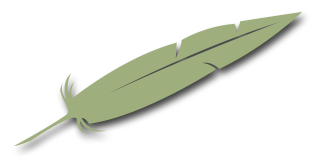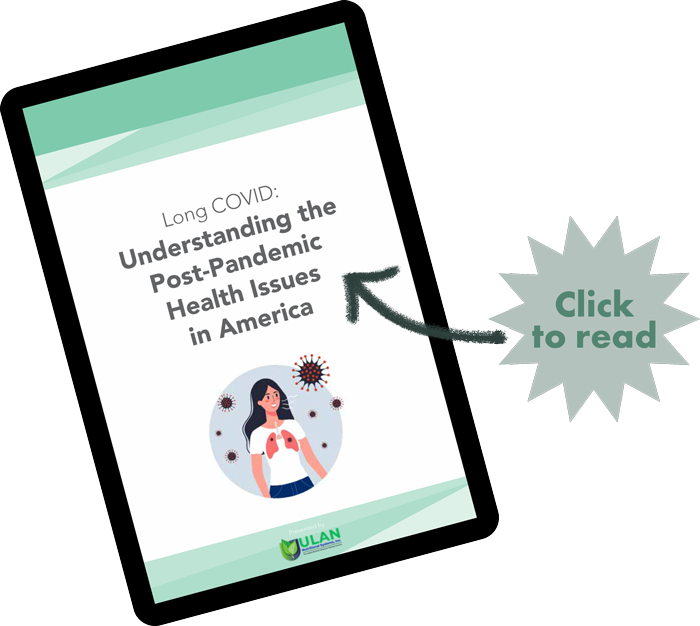- WE MOVED !!!
-
 Professional Acupuncture & Physical Therapy1118 East Superior Street
Professional Acupuncture & Physical Therapy1118 East Superior Street
Duluth, MN 55802(218) 724-3400 Clinic Hours
Mon8:00 am - 4:30 pmTue1:45 pm - 4:30 pmWed8:00 am - 4:30 pmThu8:00 am - 4:30 pmFriCLOSED

- Long Covid Booklet
Blog
5 Alternative Treatments and Home Remedies for Psoriasis

For people with psoriasis, suffering from painful symptoms like inflamed, flaking and red skin is not pleasant. The chronic skin condition is due to an overactive immune system that can be triggered by a number of internal and external factors. Many Western treatments include steroid creams and oral medications that come with a slew of unwanted side effects.
Below are alternative treatments that are safe and natural and can help reduce symptoms of psoriasis, leading you back to better health.
1. Herbal Remedies
- Aloe Vera: The gel from this cactus plant can be used generously on your skin to reduce redness and scaling caused by psoriasis. Aloe vera can be found in almost any grocery or health store.
- Tea Tree Oil: Tea tree oil is thought to have antiseptic properties. It can sooth irritated skin or scalp and can be applied daily.
- Turmeric: Turmeric has strong anti-inflammatory and antioxidant properties. Because of this, turmeric has been found to reduce psoriasis and psoriatic arthritis flares. Turmeric can be found in pill form as well as powder form to be added to food.
- Dead Sea Salts: Soaking in a bath with Dead Sea salts or Epsom salts can remove scaly skin and reduce itching. It is recommended that you use warm water and stay in the tub for 15 minutes.
2. Mindfulness/Meditation
Mindfulness and meditation practices have been found to be effective in people suffering with chronic pain like psoriasis.
Meditation is the practice of focusing your attention on the moment and ridding yourself of all external thoughts you may be having. This can lead to a state of relaxation and calmness, bringing balance to your body and mind.
Mindfulness, which is practiced in meditation, includes becoming completely aware of your body, externally and internally. This can be a seated meditation that is focused on awareness of mind, body and senses.
3. Exercise
Not only is exercise important to maintain overall health and wellness, it is especially beneficial for people with psoriasis.
Because people with psoriasis have an increased risk of heart disease and type 2 diabetes, regular exercise can prove very helpful.
Many find it hard to exercise because of the chronic pain associated with psoriasis. Exercise programs in the water prove to be an effective alternative that is easier on the body and still allows you to build endurance and strength.
Other simple ways to fit more exercise into your day include short walks, taking the stairs and stretching.
4. Massage
Seeing a licensed massage therapist can help reduce symptoms and pain. Massage promotes the function of muscle and connective tissue and can increase relaxation and circulation in the body.
5. Acupuncture
Acupuncture has been proven to be effective in minimizing chronic pain in patients. Acupuncture takes a holistic approach with the body and symptoms you may be experiencing. By returning the body to its natural flow, acupuncture can help reduce the intensity of symptoms of psoriasis.
Home Remedies:
- Soak a towel in cold milk and apply to affected area to relieve itching.
- Add ½ cup ground oatmeal into a warm bath.
- Rub the affected area with the inner side of a banana peel.
- Apply aloe vera gel to affected area.
- Cut several fresh willow branches into 3-inch stems and place in a pot with plenty of water. Bring to a boil, then simmer until water becomes black. Wash affected areas with the water three times daily.
- Slice 15 water chestnuts and soak in 3 oz. of rice vinegar crush and store in a sealed jar. Apply the paste to affected area and cover with gauze. Change daily.
Sources:
National Psoriasis Foundation
Acupuncture for Eye Health

A study conducted by researchers at the Beijing University of Chinese Medicine and published by the Journal of Beijing University of Traditional Chinese Medicine, demonstrates how acupuncture can improve visual acuity, reduce light sensitivity and decrease visual defects. The study tested the efficacy of a four point acupuncture prescription in the treatment of loss of vision. The researchers used three acupuncture points around the eye and one point in the suboccipital region. All of the points are classically indicated in Traditional Chinese Medicine (TCM) for the treatment of eye problems. The test concluded acupuncture is beneficial in the treatment of vision problems.
The eyes can reflect a lot of things regarding a person’s overall health. Illnesses can be detected by the ophthalmologist in the very early stages. And conditions like glaucoma, neuritis and even vision loss can be indicators of systemic health problems. TCM has always known about the connection between the eyes and a person’s health. Many eye conditions respond well to acupuncture treatments and these methods have been used for centuries to assist in keeping the eyes healthy.
TCM pays very close attention to the relationship between the organs and the tissues. Imbalances within the body can sometimes manifest as problems in the eyes. If a person is treated for eye problems, the underlying imbalances that have caused these issues will also be treated by the licensed acupuncturist.
The main concept behind acupuncture is the nourishment and movement of blood and energy throughout the body to create harmonic balance. Quite frequently, there are imbalances in more than one organ system that lead to problems in the eyes. But the organ system most closely associated with the eyes in TCM is the liver. In TCM, the liver “opens to the eyes.” The liver provides the primary energy flow that is responsible for the supp ort of healthy vision. Within the eye, certain meridians have primary influence over specific areas. For instance, the pupil is influenced by the kidney meridian, the retina is influenced by the liver and kidney meridians, and the sclera is influenced by the lung meridian. Reading the eye is one of the tools acupuncturists utilize when diagnosing a patient.
Receiving regular acupuncture treatments can be very beneficial in the prevention and treatment of ophthalmologic conditions. But there are some things that can be done at home too that may also help. Acupressure massage can reduce tension in the eyes and contribute to overall eye health. This can be done multiple times throughout the day to help stimulate blood flow and positive energy into the area. There are also several frequently used Chinese herbs that can help keep the eyes healthy, including goji berries and chrysanthemum flowers. Both of these herbs can be steeped into green tea for a nice eye rejuvenation tonic.
To find out how acupuncture and TCM can help you with any vision issues you might have, give me a call today at (218) 724-3400 to schedule your appointment.
Summer from a TCM Perspective

Let’s talk about late summer – from an acupuncturist’s view.
The season of the late summer is the time of the stomach and spleen. The summer season actually belongs to the heart, heart and small intestine, the late summer which is that hazy time between summer and autumn. It’s that time when yin and yang feel really balanced. When it’s not too hot, it’s not cold yet, there’s a slight crispness in the air early morning and late evening. It’s a time of perfect balance at the end of summer, and it’s also the harvest time, suggesting that there’s a sense of abundance. You’ll notice, there’s an abundance of food ripening, quite literally one the vine. This is when the earth element is at its peak.
The fascinating thing about the earth element is that it also has a season in between every other season. There’s a little window in between every season where we have ‘late summer’ again, even in-between winter and spring, in between spring and summer, definitely in-between summer and autumn and in between autumn and winter as well. These are little windows in-between every season which are known as late summer, or earth season are times of balance.
This time between seasons is a time of everything coming back to the core – all of your energies coming back into the center, grounding, rebalancing and then ready to go again into a new season which has new opportunities and new challenges. At the time of writing we’re in the earth element now, we’re crossing over from spring into summer. So this is a perfect opportunity for you to come back to your center, spend a little bit of time regrouping, grounding and preparing for what’s coming next in the summer months. When we do this, we give our body an abundance of energy again to work with and do whatever it needs to do to balance itself in the next season. There’s nothing for you to do, just come back to ground zero and give your body a rest. Get grounded in nature, rest up and your body does what it knows it needs to do with the energy. Your acupuncturist will also be able to treat these organs and maximise your ability to recharge these organs in their horary time.
If you are an Earth element constitutional type you can also receive treatment on the Stomach and spleen during their horary time of day. Receiving treatment between 7am and 11 am is the best time to treat these organs. Each organ has its own time of day where it’s at its strongest. The time of day for the Earth element, Stomach and Spleen, is 7-9am, and 9-11am. The old housewife tale says eat breakfast like a king, eat lunch like a prince and eat dinner like a pauper. This is true because the chi is the strongest in the digestive system in the stomach between 7:00 and 9:00AM, and in the spleen between 9:00 and 11:00AM. Eating your biggest meal of the day between these times means you’re going to have optimum digestion, and your body is going to be able to take the most chi from the food and transform it to give your body the most energy available. Eating your biggest meals at the opposite times will have the opposite effect, as there’s the least amount of chi in the digestive system 12 hours later. So between 7:00AM and 11:00AM is when we’ve got the most chi in the digestive system, and then 12 hours later, between 7:00PM and 11:00PM we’ve got the least.
If you want to learn what your element constitutional type is, come on in to my office on W. 2nd Street in Duluth, MN! I may be able to shed some light on this for you.
Effects of Added Sugar and Kids
 Additive sugar is prevalent throughout modern society’s current food system, the addition of extra sugar is one of the causes of the increase in obesity among children. Coincidentally, the increased rate of obesity in children has led to a rise in the imbibement of sugar-sweetened beverages among them. A study published by The New England Journal of Medicine found children with an increased rate of sugar in their beverage intake led to weight gain. This is due to the fact beverages with added sugar do not reduce the amount of calories taken in from other food and drink. The study found children were more susceptible to overeating and receive a higher calorie intake when drinking the sugar-added beverages, because it did not lead to a feeling of satiation. The study was conducted over an 18-month period, and children participating ranged from four to 11 years old, two experimental groups were created. One group of students received eight ounces of a sugar-free beverage a day during the trial period and the other group received the same amount of a sugar-added beverage. The results found a weight increase of 6.35kg in the sugar-free group and a weight gain of 7.37kg in the sugar-added group. Fat mass and skinfold-thickness among the children in the sugar-added group also increased.
Additive sugar is prevalent throughout modern society’s current food system, the addition of extra sugar is one of the causes of the increase in obesity among children. Coincidentally, the increased rate of obesity in children has led to a rise in the imbibement of sugar-sweetened beverages among them. A study published by The New England Journal of Medicine found children with an increased rate of sugar in their beverage intake led to weight gain. This is due to the fact beverages with added sugar do not reduce the amount of calories taken in from other food and drink. The study found children were more susceptible to overeating and receive a higher calorie intake when drinking the sugar-added beverages, because it did not lead to a feeling of satiation. The study was conducted over an 18-month period, and children participating ranged from four to 11 years old, two experimental groups were created. One group of students received eight ounces of a sugar-free beverage a day during the trial period and the other group received the same amount of a sugar-added beverage. The results found a weight increase of 6.35kg in the sugar-free group and a weight gain of 7.37kg in the sugar-added group. Fat mass and skinfold-thickness among the children in the sugar-added group also increased.
As the study shows, try to avoid sugar-additive food and drink within your child’s diet.
Mental Balance

Western medicine is catching up now on the fact that there’s a link between the gut and the brain. Chinese medicine has known this for thousands of years. Western thinking can actually complement Chinese medicine and vice versa. Patients with a lot of anxiety and worry can be treated with vitamins, particularly B vitamins. When the Earth element organs of the Stomach and Spleen are weak we crave sugar more. Sugar will compound this problem causing further weakness and an accumulation of dampness. Sugar can interfere with the absorption of certain vitamins – especially B-vitamins which are important for cognitive function and mental health.
Yi, or thought, is the spirit of the spleen. This is why overthinking can weaken the spleen and a weakened spleen can lead to overthinking. As an acupuncturist and meditation teacher I hear patients telling me every day, “I can’t meditate because I can’t switch my mind off or I’ve got too many thoughts.” No amount of trying to control your thinking is going to work. Strengthening the Spleen will help and there are some ways you can:
- Eat your biggest meal between 7 and 11am.
- avoid damp, sugary, cold, raw and greasy foods.
- eat more warming foods, herbs like ginger, plenty of warming soups, cooked vegetables – particularly orange vegetables are really, really, really nourishing for the spleen. And barley, rice and ginger tea etc.
- Acupuncture
- Meditation
Overthinking is the mental aspect and worry is the emotional aspect of a weakened spleen. Worry actually knots the chi of the stomach and spleen. So if you’re suffering right now from overthinking and worry, it’s a reflection of the state of your body, the way the chi is moving in your body, in your digestive system and the way your digestive system is transforming energy for other systems. If the emotions are not being heard then that can cause a lot of issues, physically and mentally as well. 90% of what I see coming into the treatment room is emotional in nature, compounded stuck emotion and then all the overthinking and the stories on top that have come from trying to work out why you are feeling that way. Having acupuncture and giving yourself space and time to process your emotions in a healthy way is the best treatment for this. The earth element also thrives on a good routine, eating at regular times, going to bed, getting up at regular times is important. Ideally you want to be going to bed as early as possible, waking up as early as possible and eating your main meal as early as possible for energy, for immunity, for lifelong strong earth element and clarity of mind.
